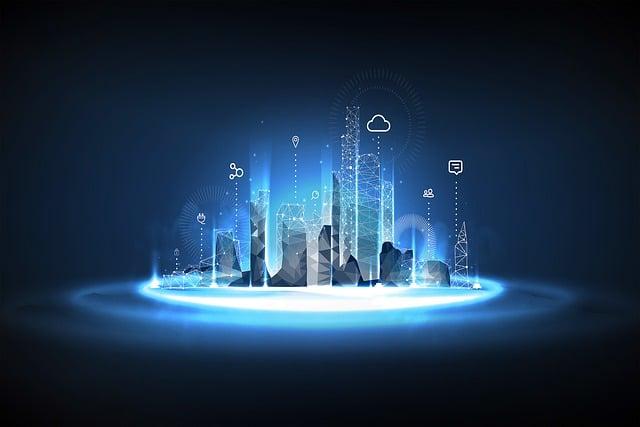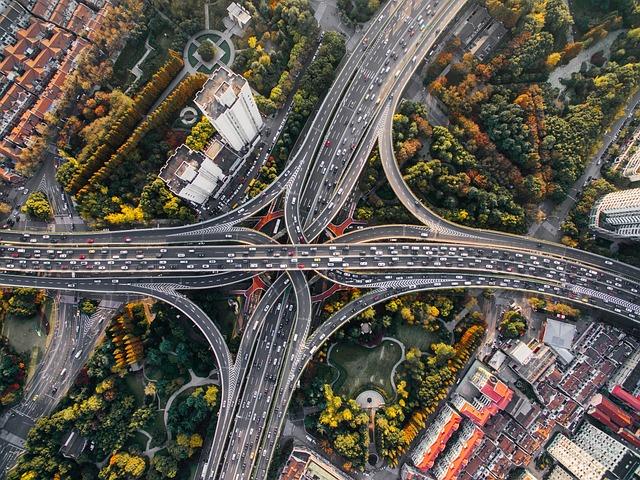Building Tomorrow: Pakistan’s Infrastructure Revolution
In a world where the pulse of progress is measured by the strength of its infrastructure, Pakistan stands on the brink of a transformative era. A nation with a rich tapestry of history, culture, and potential is now embarking on a remarkable journey of revitalization and growth. From soaring skyscrapers that redefine urban landscapes to expansive highways and modern transportation networks that connect distant corners of the country, the infrastructure revolution in Pakistan is not merely a vision—it’s a burgeoning reality. As the challenges of the past converge with the ambitions of the present, this article delves into the myriad projects and innovations that are reshaping the country’s physical and economic framework. Join us as we explore the dynamics of this monumental shift, illuminating the paths being paved for future generations and the potential they carry for a brighter tomorrow.
Revitalizing Urban Spaces through Smart Design and Sustainable Development
The transformation of urban areas into vibrant, sustainable hubs is becoming a focal point in Pakistan’s infrastructure development. By integrating smart design elements, cities are now prioritizing the balance between modern amenities and environmental awareness. This shift not only enhances the quality of life for residents but also promotes a deeper connection with their surroundings. Key strategies include:
- Implementing green roofs and urban gardens to combat the urban heat island effect
- Utilizing smart traffic management systems to reduce congestion
- Encouraging mixed-use developments that foster community interaction
Moreover, sustainable development practices are reshaping city landscapes, ensuring they meet the needs of today without compromising future generations. By adopting renewable energy sources and eco-friendly materials, cities are reducing their carbon footprint. A focus on public transportation and pedestrian-friendly pathways encourages a healthier lifestyle while minimizing reliance on private vehicles. The benefits are clear:
| Benefits | Description |
|---|---|
| Environmental Impact | Significant reduction in greenhouse gas emissions |
| Economic Growth | Boost in local economies through increased accessibility |

Harnessing Technology for Efficient Transportation Networks
In a rapidly urbanizing world, the integration of advanced technologies into transportation networks is critical for enhancing both efficiency and sustainability. Smart traffic management systems utilizing Artificial Intelligence (AI) can analyze real-time data to adjust traffic signals, reducing congestion and greenhouse gas emissions. Furthermore, embracing Internet of Things (IoT) devices in vehicles can facilitate seamless communication between drivers and the infrastructure, leading to improved safety and reduced travel times. Key components of this technological revolution include:
- Automated Traffic Monitoring: Sensors and cameras that provide real-time analytics on road conditions.
- Integrated Public Transport Systems: Mobile applications that allow users to plan journeys across various modes of transport efficiently.
- Electric Vehicle Infrastructure: Charging networks that support a shift to greener transportation options.
Moreover, leveraging platforms like Geographic Information Systems (GIS) paves the way for meticulous planning and development of transport routes. This technology enables urban planners to visualize data layers, facilitating informed decision-making related to public transit, pedestrian pathways, and cycling lanes. By investing in big data analytics, authorities can predict traffic patterns and proactively adapt transportation policies. A sample illustration of the impact of these technologies on travel time reduction can be summarized in the table below:
| Technology | Impact on Travel Time | Emission Reduction |
|---|---|---|
| AI Traffic Management | 25% Reduction | 30% Decrease |
| Smart Public Transport Apps | 15% Reduction | 20% Decrease |
| EV Charging Infrastructure | 10% Reduction | 25% Decrease |

Fostering Public-Private Partnerships to Accelerate Growth
The future of Pakistan’s infrastructure lies in cultivating robust collaborations between the public and private sectors. By leveraging the unique strengths of both spheres, we can create solutions that are not only innovative but also sustainable. Investment opportunities, shared resources, and risk management strategies are fundamental pillars that define these partnerships. When governments and private entities unite, they can facilitate projects ranging from transportation networks to energy initiatives, ultimately transforming the economic landscape.
Successful models from around the globe illustrate the immense potential of these alliances. In countries where public-private partnerships (PPPs) have flourished, we see superior infrastructure development characterized by increased efficiency, cost-effectiveness, and faster project timelines. To pave the way for similar success in Pakistan, it’s critical to establish a framework that encourages participation from agile private entities while ensuring that public interests are safeguarded. Below is a brief overview of essential components that can drive the success of PPPs:
| Key Components | Description |
|---|---|
| Risk Sharing | Balanced distribution of risks between public and private partners. |
| Transparent Processes | Open communication and clear guidelines for all stakeholders. |
| Long-Term Vision | Focus on sustainable growth and community benefits rather than short-term gains. |
| Regulatory Support | Establishing policies that foster trust and reduce bureaucratic hurdles. |

Enhancing Resilience: Preparing Infrastructure for Climate Change Challenges
As Pakistan navigates the complexities of urban development, a proactive approach to infrastructure planning is paramount in the face of climate change. Strengthening existing systems and designing new ones that can withstand extreme weather events is essential. Innovative materials and sustainable practices should be incorporated into construction projects, ensuring that infrastructures such as roads, bridges, and buildings can endure the increasing pressures of flooding, heatwaves, and seismic activities. By fostering a culture of resilience, we can transform our cities into bastions against the unpredictable forces of nature, ultimately safeguarding communities and enhancing public safety.
The integration of smart technology into infrastructure systems will play a transformative role in adapting to climate challenges. Smart grids, for instance, can improve energy efficiency and manage loads during peak demand or outages, reducing the burden on the system. Additionally, green roofs, permeable pavements, and eco-friendly drainage solutions not only mitigate flooding but also contribute to biodiversity and urban cooling. To illustrate the potential benefits of adopting resilient strategies, consider the following table that highlights key initiatives:
| Initiative | Description | Benefits |
|---|---|---|
| Green Infrastructure | Implementation of vegetation in urban settings | Improved air quality, reduced heat, enhanced biodiversity |
| Smart Water Management | Use of technology to optimize water use | Conservation of water resources, efficient stormwater management |
| Resilient Construction Materials | Incorporating adaptable materials in builds | Longer lifespan, reduced maintenance costs, improved safety |
Insights and Conclusions
As we stand on the cusp of a transformative era in Pakistan’s infrastructure landscape, it becomes increasingly clear that the foundations we lay today will shape the contours of our collective tomorrow. The ambitious projects underway promise not only to enhance connectivity and accessibility but also to spur economic growth and foster a sense of community among diverse populations.
However, this revolution requires more than just engineering marvels and technological advancements; it calls for a commitment to sustainable practices that respect the environment and empower local communities. As we navigate the complexities of development, it is crucial that we harness innovation while honoring our rich cultural tapestry, ensuring that progress is inclusive and equitable.
The journey toward a modernized Pakistan is both challenging and exhilarating. With each bridge built and road paved, we are not just constructing physical infrastructure but are also weaving together the hopes and aspirations of a nation poised to step confidently onto the global stage. Let us embark on this voyage together, mindful of the legacy we leave for future generations and inspired to turn visionary ideas into lasting realities. In the words of a wise sage, “The journey of a thousand miles begins with a single step,” and here, in Pakistan, that journey has just begun.



